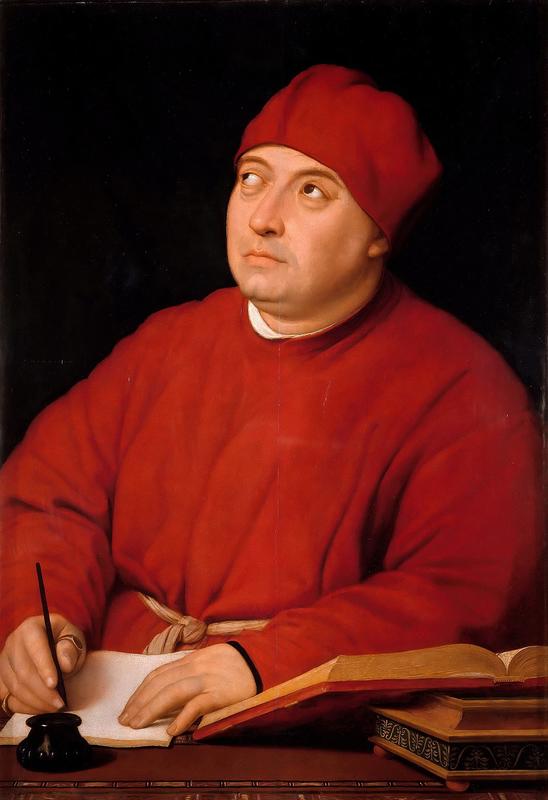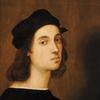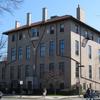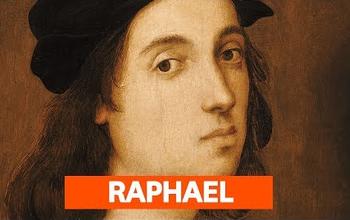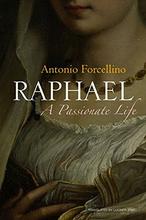More about Tommaso Inghirami
- All
- Info
- Video
- Shop

Contributor
Count Tommaso Inghirami was Raphael’s colleague, and the loyal artist flattered his bosom buddy with this opulent, intellectual portrait.
Most Renaissance masters (looking at you, Botticelli) would shy away from a subject like Tommaso, whose crossed eyes provided an obstacle to the creation of picture-perfect portraiture. Raphael, to the contrary, embraced his chum’s perfect imperfections. Tommaso’s eyes point in different directions, but both aim upwards to imply a search for godly inspiration. His open manuscripts allude to the count’s high profile work as librarian to Pope Julius II.
Tommaso was just two years old when his father was killed in a revolt. The talented tot was left under the care of Lorenzo de’ Medici, patron to Leonardo da Vinci and Michelangelo. This distinguished art fiend was nicknamed “Lorenzo the Magnificent,” an improvement on his father’s moniker “Piero the Gouty.” Despite the fanfare, Lorenzo’s raspy voice, homely appearance, and stout stature meant he was often outshone by his supermodel brother, Giuliano. Lorenzo, however, would suffer a less gruesome fate than his charming younger sibling: In 1478, Giuliano was stabbed nineteen times in a Florentine cathedral in an attempt by the Pazzi family to remove the Medici brothers from power. With help from a poet, Lorenzo bested his own attackers, cementing his position as totalitarian dictator, intellectual, and connoisseur of the fine arts.
Perhaps Lorenzo found a kindred spirit in Tommaso, whose quick wit would make him an acting legend. During a performance of Phaedra, Tommaso covered for a set mishap by waxing poetic in improvised Latin verse. The incident gained him the lifelong moniker “Phaedra,” after his starring role as the vengeful Cretan royal. Unfortunately, the aristocratic actor was destined for an end no less grisly than Giuliano’s. In 1508, Tommaso toppled from a mule and was squashed beneath an oxcart. The injuries overtook him eight years later, and Tommaso passed away in 1516 as a middle-aged man. The moral to our tale? Beware of mules, carriages, and conspiring Florentine aristocrats.
Sources
- “Count Tommaso Inghirami, about 1515-1516.” Isabella Stewart Gardner Museum. Accessed December 31, 2017. https://www.gardnermuseum.org/experience/collection/11776?filter=room%3….
- “Giuliano de’ Medici.” Wikipedia. December 11, 2017. Accessed December 31, 2017. https://en.wikipedia.org/wiki/Giuliano_de%27_Medici.
- “Lorenzo de’ Medici.” Wikipedia. December 14, 2017. Accessed December 31, 2017. https://en.wikipedia.org/wiki/Lorenzo_de%27_Medici.
- Nielsen, Christina M. and Nathaniel Silver. Isabella Stewart Gardner Museum. New Haven: Yale University Press, 2017.
- “Portrait of Tommaso Inghirami.” Wikipedia. October 20, 2016. Accessed December 30, 2017. https://en.wikipedia.org/wiki/Portrait_of_Tommaso_Inghirami.
- “Tommaso Inghirami.” Wikipedia. May 26, 2017. Accessed December 30, 2017. https://en.wikipedia.org/wiki/Tommaso_Inghirami.
- Walker, Joseph Cooper. An Historical and Critical Essay on the Revival of the Drama in Italy. Edinburgh: Mundell and Son, 1805.
Featured Content
Here is what Wikipedia says about Portrait of Tommaso Inghirami
Portrait of Tommaso Inghirami is an oil painting by Italian artist Raphael. Painted ca. 1509, it exists in two copies, one of which is in display in the Palatina Gallery of Palazzo Pitti in Florence and the other in the Isabella Stewart Gardner Museum in Boston. Known for its realism and attention to detail, the image is reminiscent of works by Hans Holbein the Elder, by whom Raphael may have been influenced in its execution. Stylistically, it relates to Raphael's Portrait of Agnolo Doni, ca.1506, in what Claudio Strinati described in 1998 as its "merciless clarity."
The subject of the painting, Tommaso Inghirami, was a friend of Raphael's, a prelate nicknamed Phaedra following a skillful exhibition of Latin poetry improvisation during a performance of Seneca's Phaedra wherein he carried the title role. A popular orator and actor, Tommaso Inghirami had strabismus. According to 2005's Cambridge Companion to Raphael, the piece is "the first likeness into which Raphael introduced the concept of movement", in the twist of his body as he contemplates his composition. By means of this device, Raphael focused attention away from his subject's disfigurement.
Check out the full Wikipedia article about Portrait of Tommaso Inghirami

